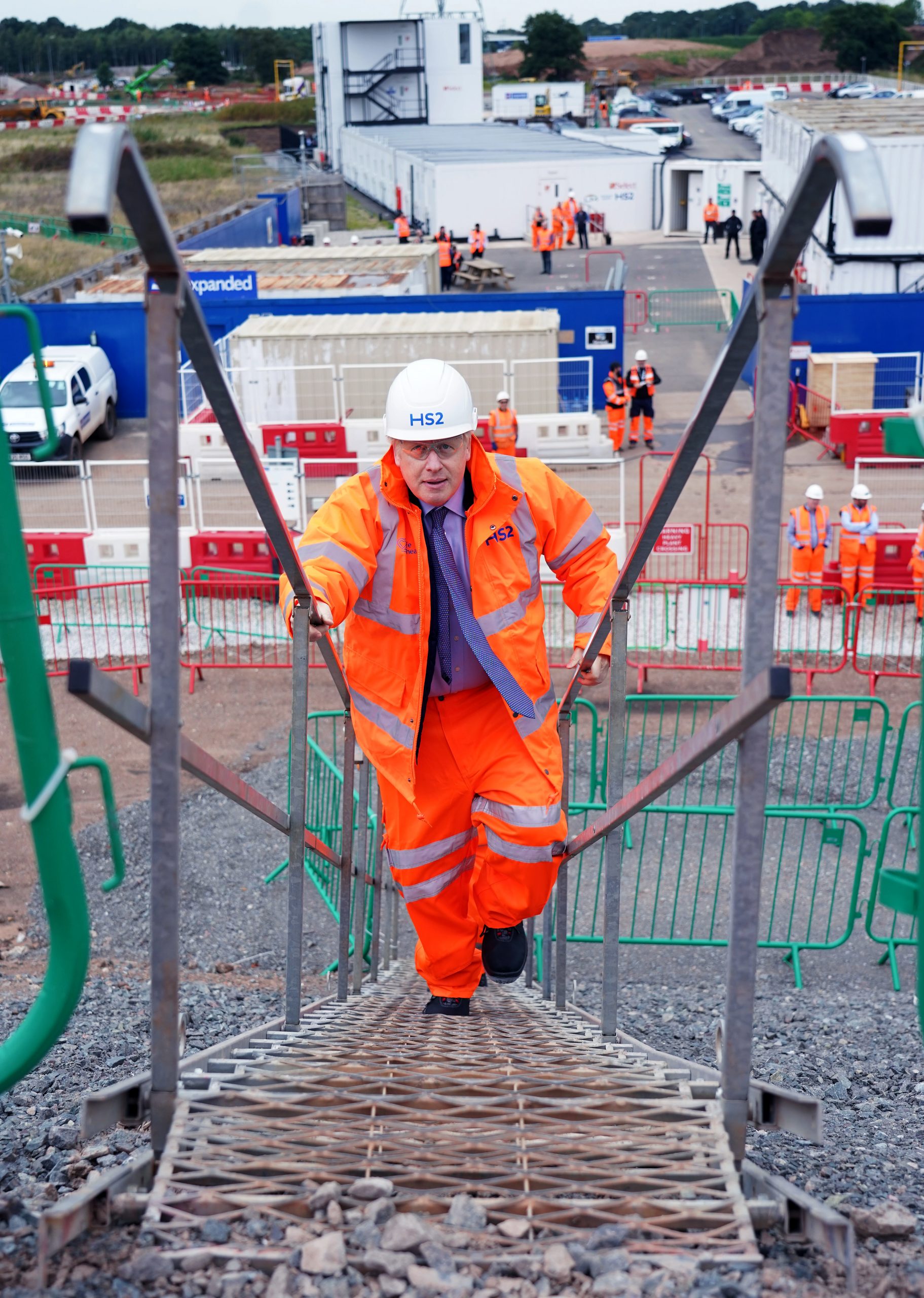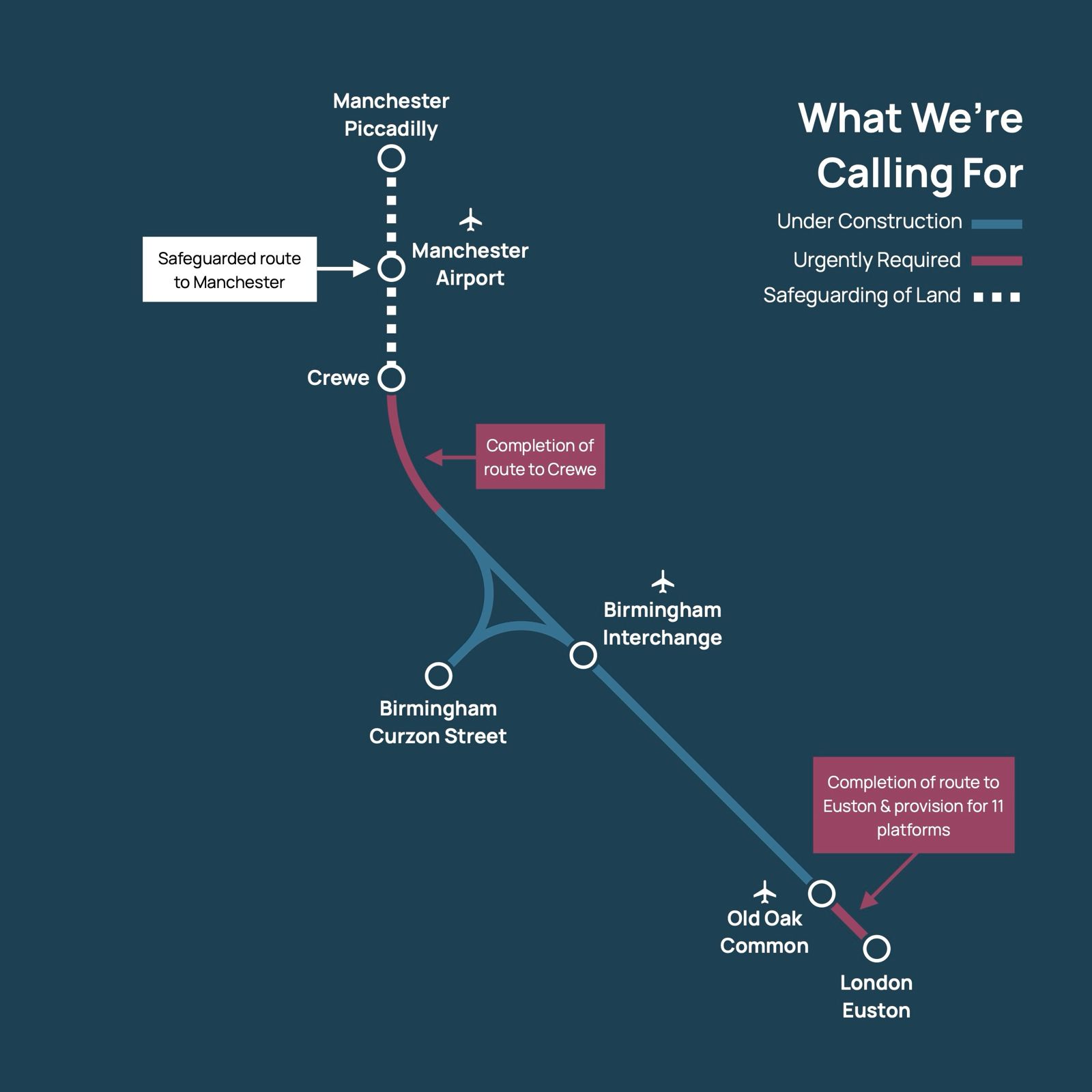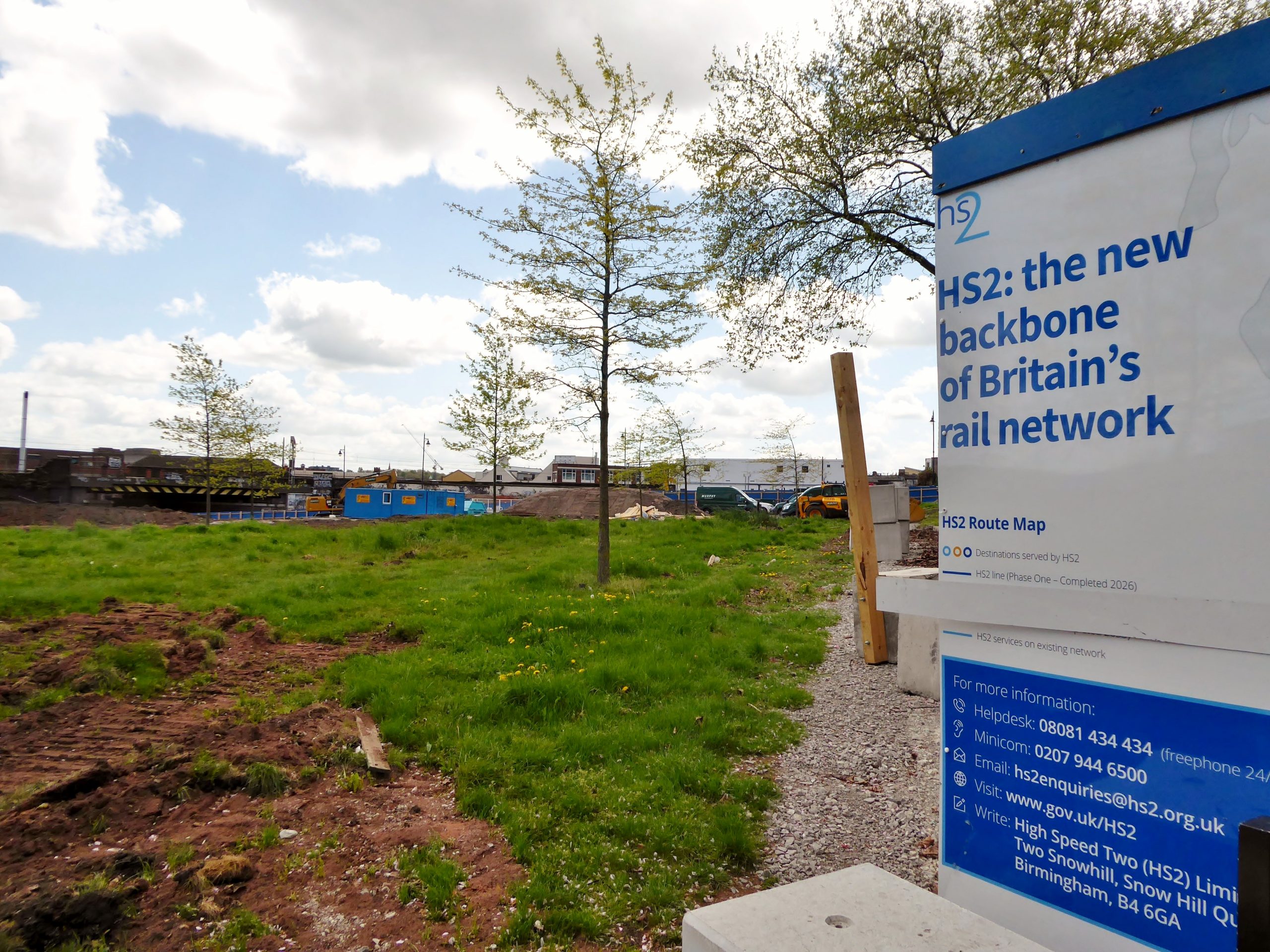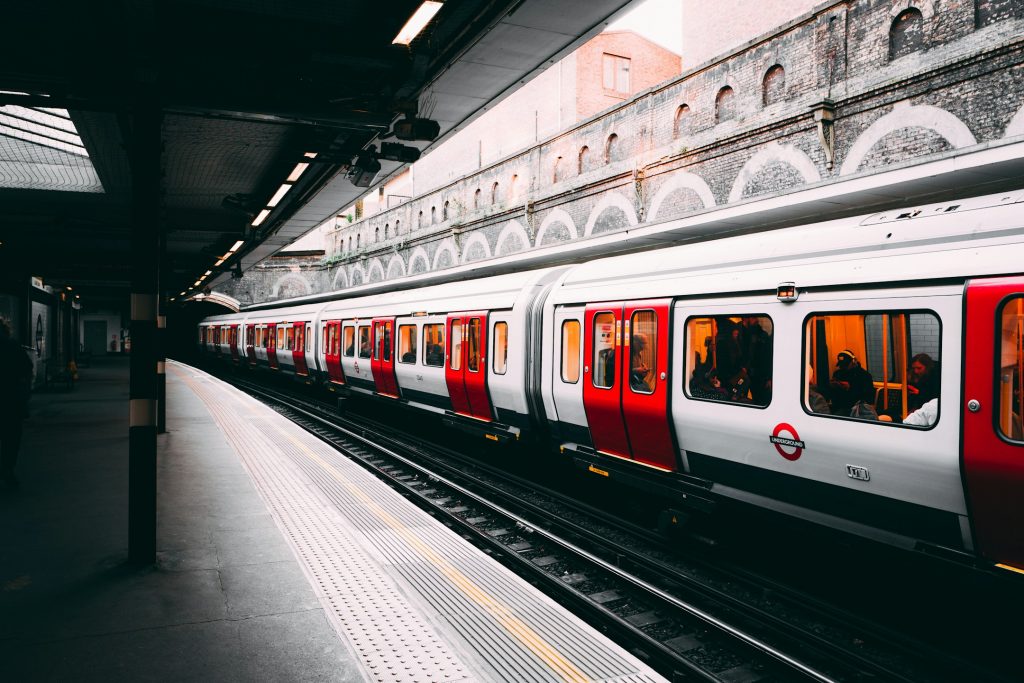Vision:
High speed rail
- Last update: 3/10/2024
- Version: v2.0
We believe a high-capacity, high-speed rail network should be the backbone of our transport system.

At Enroute, we strive to create a greener, economically-friendly, and community-influenced public and active transport network, encouraging modal shift from road and private car to sustainable modes of transport. We elaborate on our aims with our comprehensive vision for the transport network in 2050.
Our 2050 Vision draws on our work and the published work of other organisations. Whilst we highlight where our vision aligns with the views of other organisations, the 2050 Vision represents Enroute’s views and should not be taken to represent those of other organisations.
Why High-Speed Rail?
We believe high-capacity, high-speed rail needs to form the backbone of our long-distance transport network, enabling large-scale sustainable modal shift from air and road to rail, freeing up capacity on our wider rail network for frequent, efficient and reliable regional passenger and freight services, boosting the economy, spurring regeneration in the areas served, and closing regional divides. We refute the false dichotomy underpinning the Network North command paper, published by the previous Government in 2023, between high-speed rail and local transport; high-speed rail isn’t just about getting quickly between the major cities, but rather it supports and elevates the entire sustainable transport network.
We had the beginnings of a vision for a high-speed Britain before; It was called HS2. It was neither a complete nor perfect vision, but by linking London, Birmingham, Manchester, Liverpool, Leeds, York and Newcastle, and thus freeing up space on the West Coast, Midland and East Coast Main lines, it laid the groundwork for an ambitious network. The cancellation of HS2 has left us with a broken spine, which is why we’ve launched a campaign to fix it, urging the new Government to make the most of the network we have under construction and leave room for future expansion.
In our 2050 Vision, we elaborate on that future network. We borrow a concept from our friends at Greengauge 21, modular incrementalism, to describe our approach where our vision is broken down into individual schemes, which can both stand alone and tie into a wider network in the future – rather than a singular all-or-nothing megaproject.
The vision we outline below differs in some areas from other proposals and campaigns. Our purposes here are to outline what we believe should be priorities, and to put some new ideas into the public domain which we believe deserve consideration. We do not oppose competing options for its own sake. As decisions are made and options are locked in, we are prepared to adjust our vision accordingly, such that the network we outline remains coherent and deliverable.
Fix the Spine
We believe the urgent priority for the current Government is to Fix the Spine, turning the current high-speed line under construction between Old Oak Common, Birmingham and Handsacre Junction (HS2) into an effective high-speed spine for the whole country, relieving capacity on the West Coast Main Line (especially around Colwich Junction and Shugborough Tunnel, Britain’s biggest bottleneck), and leaving room for future expansion, as we outline below.
Specifically, we are calling for:
- Delivery of London Euston station phase 1 (six platforms), and the line to Old Oak Common, as the terminus of the high-speed spine.
- Safeguarding space at London Euston for the future delivery of phase 2 (a further five platforms), to enable future growth and the full exploitation of the high-speed spine.
- Delivery of a Stafford Bypass line from Handsacre to Crewe, fixing Britain’s biggest bottleneck.
- Safeguarding a future route between Crewe and Manchester.

Map: Britain’s initial high-speed spine, which we are calling for in our ‘Fix the Spine’ campaign.
Getting High-Speed Rail to Manchester
In our ‘Fix the Spine’ campaign, we argue that the route between Crewe and Manchester needs to be safeguarded, with land retained, such that once investment can be made available and final decisions are taken on Northern Powerhouse Rail and Manchester Piccadilly (see below), construction should begin on delivering high-speed rail to Manchester as quickly as possible. This will significantly relieve congestion on the existing rail network in south Manchester and allow full-length high-speed trains to serve Manchester Piccadilly (thus increasing seating capacity).
A link to the West Coast Main Line north of Warrington (a reinstated ‘Golborne link’, or a new link further north) would boost capacity and cut journey times on services between London and Scotland, and lay the groundwork for further extension northwards (see below). We believe the junction between the Manchester and ‘Golborne’ (or equivalent) branches should be supplemented by a new chord (henceforth the ‘High Legh Chord’) to enable services between Manchester Piccadilly and the Scottish central belt to use this high-speed infrastructure, cutting journey times and freeing up further capacity in central Manchester and on the Bolton Corridor.
Northern Powerhouse Rail & CrossNorth
Northern Powerhouse Rail (NPR) is essential to levelling up and unifying the whole of the North of England, providing high-quality, high-capacity east-west services in a country that has long prioritised north-south routes to and from London. Delivered properly, with high-quality, segregated infrastructure, it should enable a frequent, super reliable, metro-style service that connects the North’s major cities and towns, freeing up capacity in congested major stations such as Liverpool Lime Street, Manchester Piccadilly and Leeds for more commuter services. The North should not accept second-rate, ‘cheap and nasty’ solutions – but we also acknowledge that this vision cannot be delivered all at once. Therefore, Northern Powerhouse Rail should be delivered as a modular, incremental scheme, where components can be committed to and delivered one piece at a time, complementing the existing network in the short-term but forming a high-quality segregated network in the long-term.
Although the fortunes of NPR have long been intertwined with that of the wider high-speed rail network (hence its inclusion in this section of the 2050 Vision), NPR does not have to be designed with super-high-speed in mind; what matters is high-capacity and reliability.
Our envisaged Northern Powerhouse Rail network consists of the following modular components:
- In Liverpool, a new underground station (either at Lime Street or Central), which would serve both Northern Powerhouse Rail and high-speed services to London, Birmingham and Scotland. This would free up platform capacity at Lime Street for local services, and enable 400m-long trains to serve Liverpool.
- A new line between Liverpool and Manchester (NPR west), cutting journey times and freeing up space on the Chat Moss and CLC (Warrington Central) lines for local services. A branch from this line onto the line towards Chester would bring Chester (and North Wales) into the Northern Powerhouse Rail network.
- In Manchester, a new east-west CrossNorth tunnel, serving Salford Interchange and Manchester Piccadilly. This would offer transformational relief for the congested Castlefield Corridor, enabling metro-style services for Greater Manchester on the existing network, and relieve demand at Piccadilly by offering a game-changing interchange in the west of the city, with quick links to the Salford Quays/MediaCityUK area.
- A new line across the Pennines from Manchester to Leeds (NPR central), cutting journey times, improving reliability and freeing up space on the line via Huddersfield for local and regional services. This could either run via Bradford, or follow the M62 with Bradford served on a loop.
- A new underground station in Leeds, ensuring reliability and freeing up platform space in Leeds station for local services.
- New lines from Leeds towards York and Hull (NPR east).
- A new secondary route between York and Newcastle via Teesside, potentially incorporating the Leamside line (see Our Vision on Expanding the Rail Network – forthcoming).
- Further in the future, a new line across the Pennines from Manchester to Sheffield (following a similar path to the Woodhead line, but with new infrastructure), cutting journey times and freeing up capacity for local services and freight on the Hope Valley line.
Map: Our envisaged CrossNorth tunnel across Manchester. This could be delivered as a standalone project, separate to north-south high-speed rail at Piccadilly.
Our outlined vision for Northern Powerhouse Rail differs in some areas from other proposals being actively developed (such as the previous Government’s plans, and the route currently being developed by the Liverpool to Manchester Railway Board). Most notably, our preferred CrossNorth tunnel route through Manchester is proposed to be separate from north-south high-speed services to London, Birmingham and Scotland (see above). The purpose of our vision is to put forward our ideas into the public domain for consideration against alternatives, and not to oppose developments of other routes for its own sake.
The cross-country spine (‘eastern leg’)
Plans for HS2 previously included an ‘eastern leg’, broadly following the M1 corridor from Birmingham, through the East Midlands and South Yorkshire, to Leeds and York. Though it may be some time in the future, we envisage a newly-reimagined cross-country spine, broken down into a number of modular components (as per Northern Powerhouse Rail), with the potential to accelerate some sections as standalone projects. Our vision also diverges in certain areas from the previously planned eastern leg.
The core of our envisaged cross-country spine would run from Birmingham, through the East Midlands Hub station at Toton and Sheffield Meadowhall, to Leeds and York. In addition to this infrastructural core, we argue that high-speed services from London and Birmingham should branch off to serve Nottingham, and services from Birmingham should serve Hull.
Our envisaged cross-country spine would consist of the following modular components:
- New line from Birmingham to the East Midlands. This section could be accelerated for early delivery, tying into the Midland Main Line.
- East Midlands Hub (Toton) station, as previously planned, with a grade-separated reconstruction of Trent Valley Junction to enable high-frequency connecting services to Derby, Nottingham and Leicester (and beyond).
- New line from East Midlands (Toton) to Sheffield Meadowhall.
- New line from Sheffield Meadowhall to Leeds. This section could be accelerated (as advocated for by the HS2 East partnership) and delivered initially as a standalone project.
- New line from Sheffield Meadowhall to York, with a branch towards Hull. Alternatively, trains to York and Hull could run through Leeds, requiring an expanded underground station (combined with NPR – see above).
Future Expansion
In the sections above, we have set out what we believe should be the key priorities, creating a core network that runs from London, through Birmingham, to Manchester, Liverpool, the East Midlands, Sheffield, Leeds, York and Hull, with Northern Powerhouse Rail tying together the ‘M62 corridor’ from Liverpool, Chester and North Wales, through Manchester and Leeds, to Hull, York and the North East. Services using this high-speed infrastructure would also use sections of existing line to serve Bristol, Newcastle, Edinburgh and Glasgow.
Further expansion should be explored in detail along the following potential routes (taking some cues from Greengauge 21 and rail engineer and writer Gareth Dennis). Some of these may be delivered long beyond 2050 (if at all), but where a potential future need can be identified, passive provision should be left in preceding projects.
- Connection between the high-speed spine and HS1 (the ‘Eurolink’), enabling international services from cities north of London (Birmingham, Manchester, Leeds and potentially Edinburgh and Glasgow).
- Golborne/Wigan/Preston area to Glasgow Central and Edinburgh Waverley: This line would increase capacity and help slash journey times from London, Birmingham and Manchester to the Scottish central belt, enabling a reduction in the need for domestic flights. This could be preceded by priority (modular) projects, such as a Shap bypass, a Glasgow suburban bypass, or lengthened platforms in Glasgow Central, to bring forward urgent capacity improvements to this end.
- A second route from York to Newcastle via Teesside, potentially incorporating the Leamside line, bringing the Tees Valley conurbation into the high-speed network and increasing frequency to Newcastle.
- Birmingham to Bristol, for faster services from the Midlands and the North to the South West and South Wales.
- Edinburgh towards Perth and Dundee (see Greengauge 21).
- London to Stansted & Cambridge (see Greengauge 21).
- London to the South West via the South Hampshire Conurbation (see Rail Natter).
- Carlisle to Stranraer or Crewe to Holyhead, in connection with a future fixed link to the island of Ireland.
- Beyond HS2 (Greengauge 21)
- Revisiting High-Speed North (Greengauge 21)
- A high speed rail network for the UK and Ireland (Rail Natter)
- Exploiting the Potential (High Speed Rail Group)
- Integrated Rail Plan
- Network North
- HS2 Next Steps (Campaign for Better Transport)
- A New Approach for HS2 (Chris Gibb)
- Rail and Urban Transport Review (Urban Transport Group/ARUP)
- Opportunity through connectivity: Catalysing economic growth through a Midlands-North West Rail Link (Burnham/Street/ARUP)
- Liverpool & Manchester Rail Board (Place North West)
- Public Accounts Committee
- National Audit Office
- Lessons learned from HS2 cancellation (Institute of Civil Engineers)
- 14th December 2023: Initial publication
- 3rd October 2024: Complete overhaul of the vision, built on months of discussions, highlighting the Fix the Spine campaign, with new separate sections for Northern Powerhouse Rail and our newly-reimagined 'cross-country spine'.





